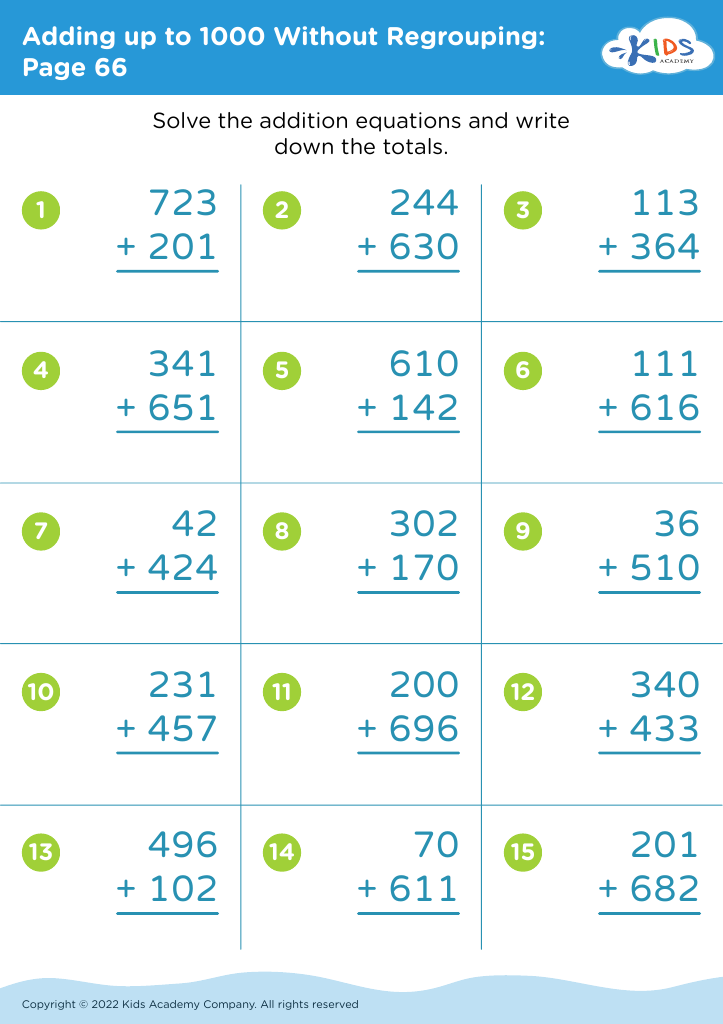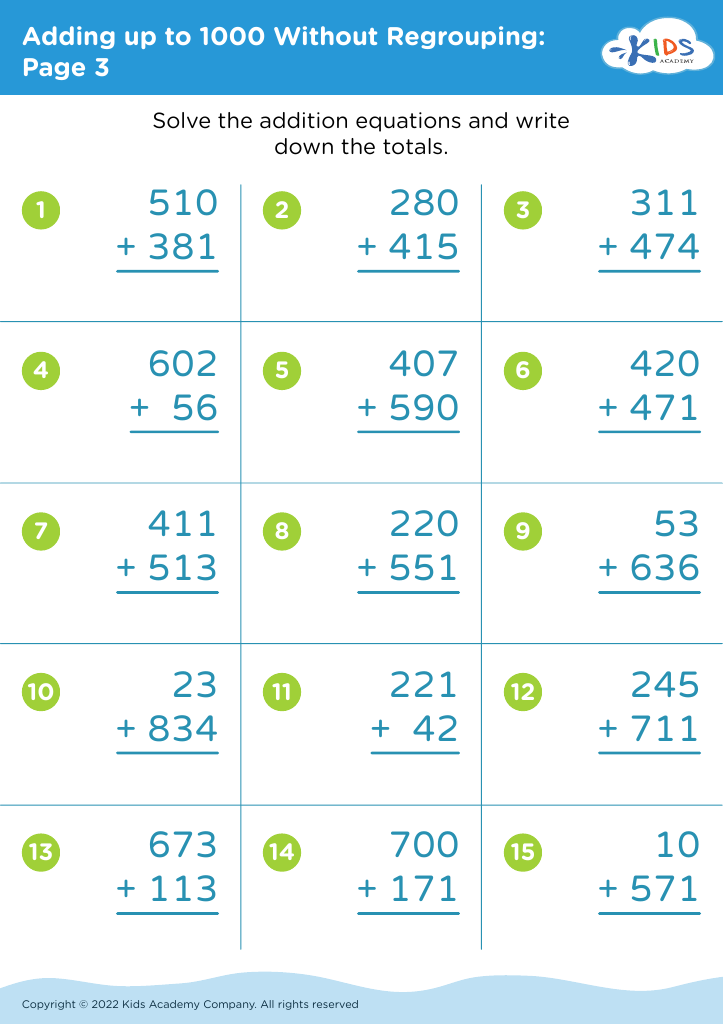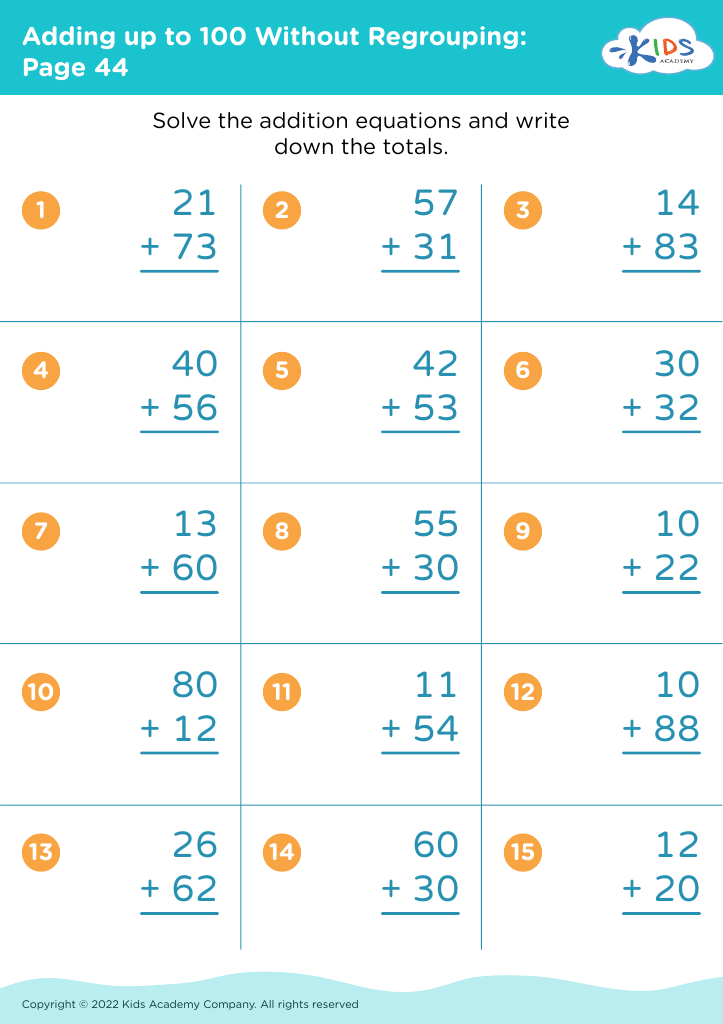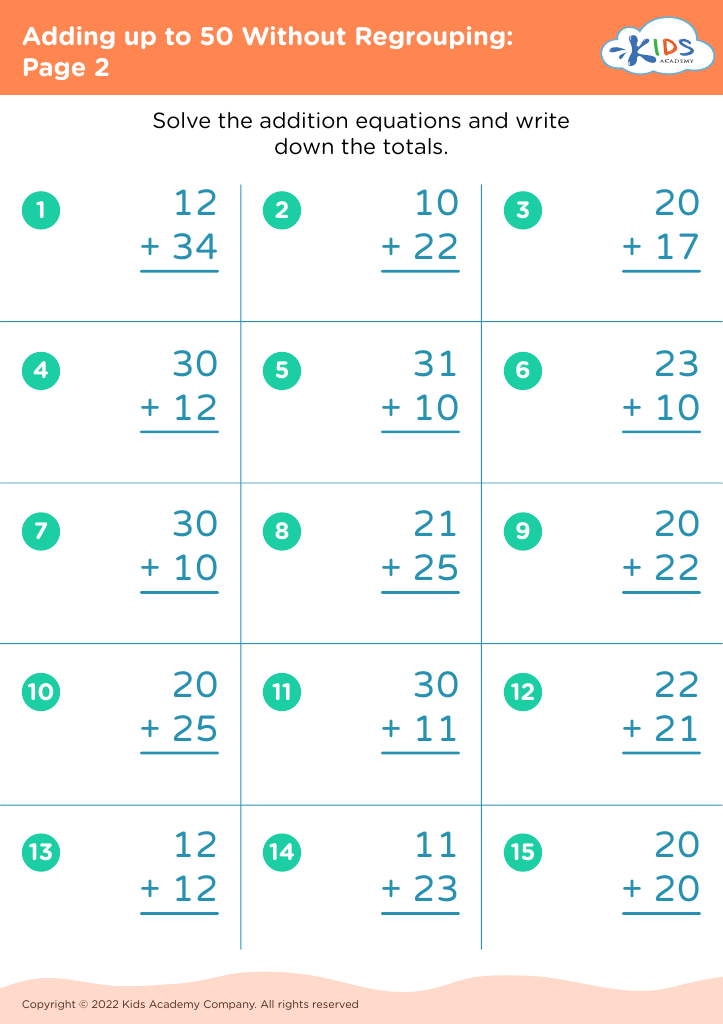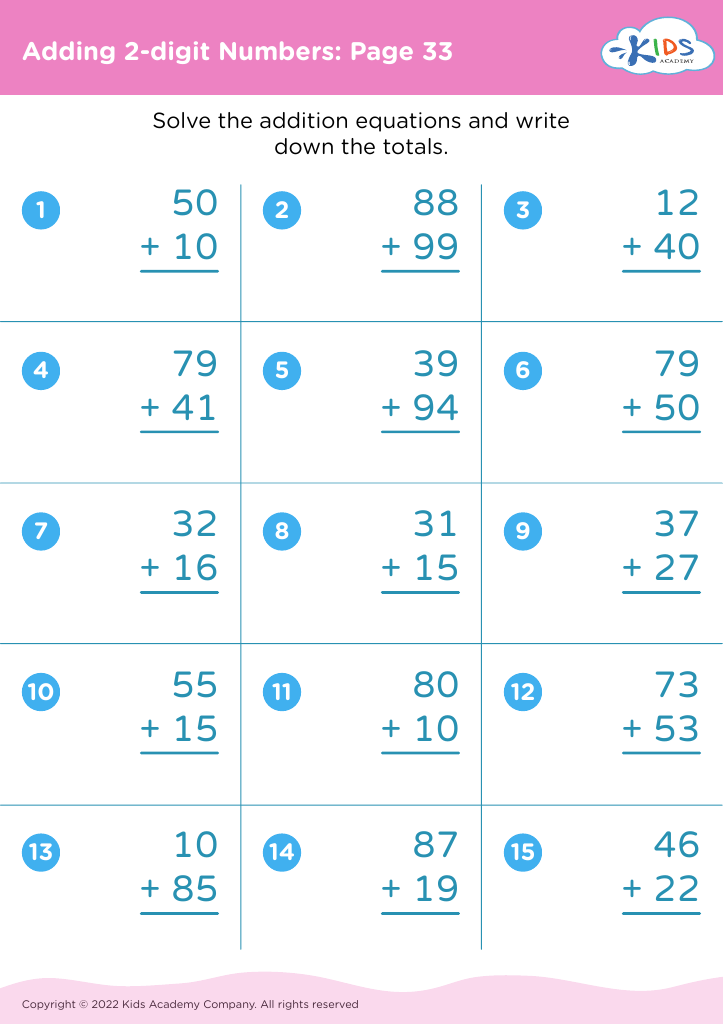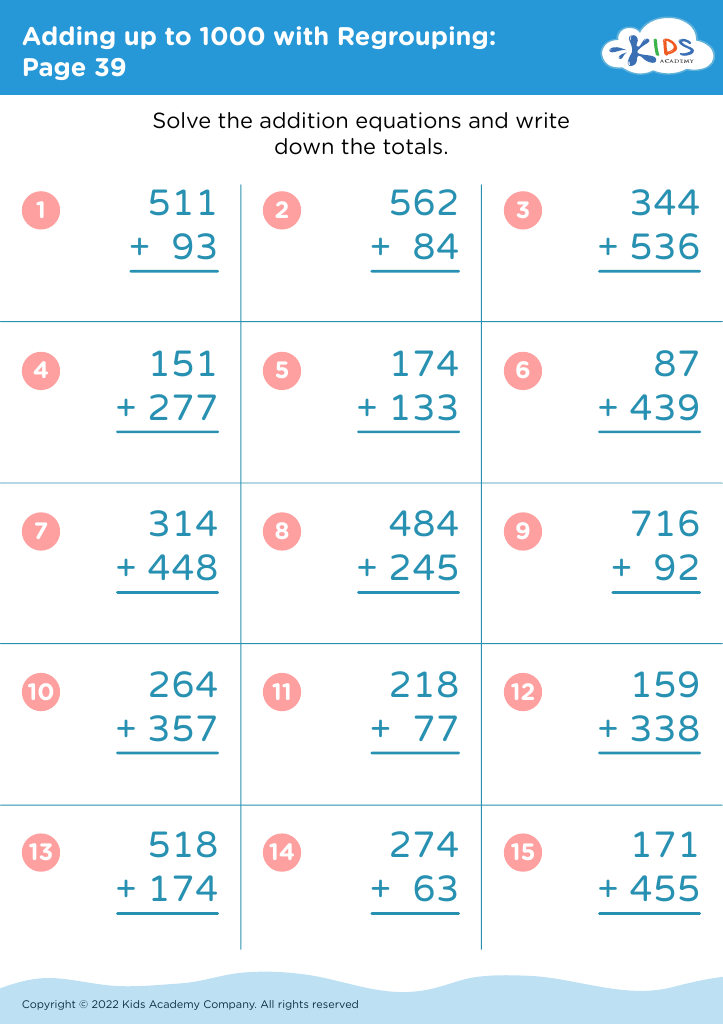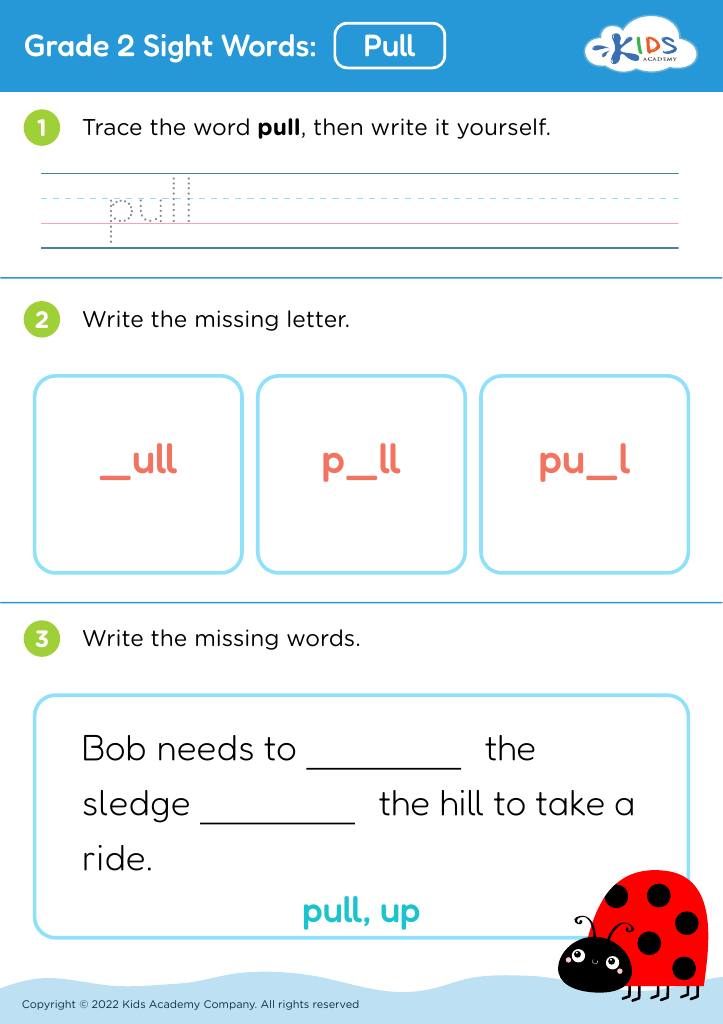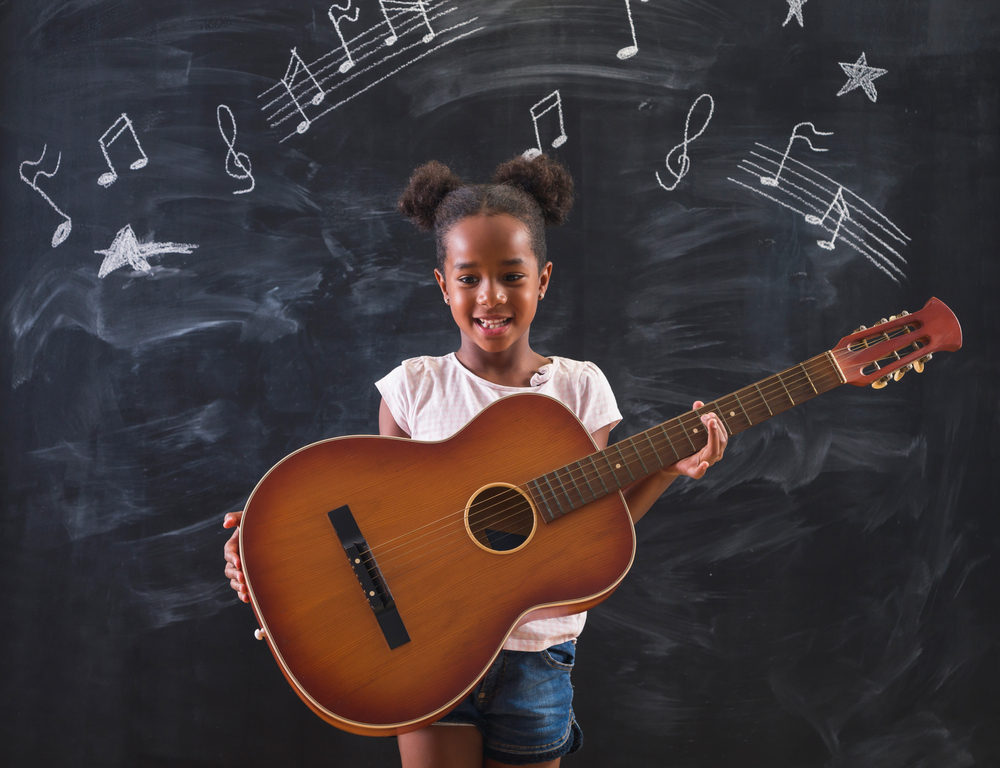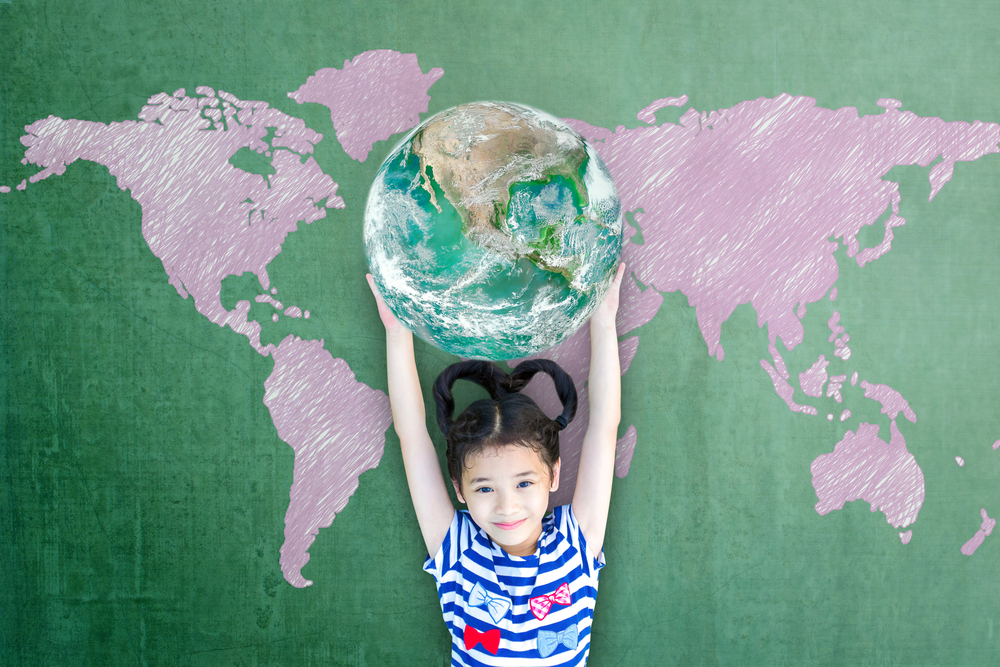Understand patterns Worksheets for Ages 6-9
7 filtered results
-
From - To
Explore our "Understand Patterns Worksheets for Ages 6-9" designed to enhance your child's critical thinking and problem-solving skills. These engaging worksheets, available at Kids Academy, help young learners identify, complete, and create patterns through fun, interactive activities. With colorful designs and age-appropriate challenges, our exercises capture your child's interest and make learning enjoyable. Perfect for classroom use or homeschooling, these printable worksheets lay a solid foundation in understanding mathematical and logical sequences. Watch your child’s confidence soar as they master the art of recognizing and predicting patterns, a crucial skill for their academic growth.
Understanding patterns plays a crucial role in the development of young children aged 6-9, serving as a foundational skill in both mathematics and daily life. Recognizing and creating patterns help children develop critical thinking and problem-solving skills. For instance, when children identify patterns, they engage in predicting what comes next, which strengthens their logical reasoning.
Patterns are everywhere — in nature, music, daily routines, and art — and becoming adept at recognizing them allows children to make sense of the world. In mathematics, understanding patterns leads to a better grasp of concepts such as sequences, arithmetic operations, and eventually, algebra. When children can spot patterns in numbers, they can understand and learn multiplication tables and other math functions with greater ease.
Moreover, pattern recognition enhances literacy skills. Language and reading involve recognizing patterns in sounds, letters, and sentences, contributing to better pronunciation, spelling, and comprehension. Engaging with patterns also promotes creativity and the ability to see connections between different pieces of information.
For educators and parents, fostering an environment where pattern recognition is encouraged helps set the stage for lifelong learning and curiosity. Simple activities like sorting objects, clapping out rhythms, or identifying patterns in storybooks can significantly aid in developing these critical skills.
